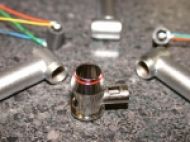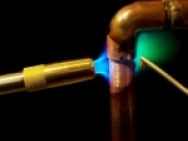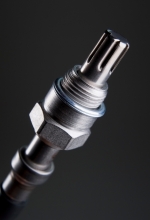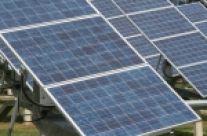SOLUTIONS & SERVICES
Solutions & Services
Soldering Assembly Services

S-Bond Technology has extensive experience with structural soldering and brazing and offers its expertise to companies with prototype or production needs. Soldering assembly is accomplshed with S-Bond Technologies active solders or with conventional solders, depending on the customers requirements and interests.
Structural soldering is employed in non-electronic manufactured components that can be bonded using conventional solders and fluxes. Soldering is technically the joining of materials using a molten filler metal that melts below 450C (842F). Such Solders include the Pb-Sn, Sn-Pb, Sn-Ag, Sn-Ag-Cu, Sn-Sb, Sn-Bi, Sn-In, In and Zn-Al based alloys. Soft solder joints are not as strong as braze alloys with joint strengths ranging from 2,000 – 10,000 psi [ ~14 – 70 MPa ]. In many structures, fittings, and piping applications, such joint strengths are acceptable.
Many less critical structures, such as electronic housings, sensor housings, sensor packages, wave guides, tubes, thermal management packages, heat pipes, cold plates, electrical feedthroughs and electrical contacts, are conventionally soldered.
Soldering can bond many metals, including copper, brass, nickel and nickel alloys, steel and stainless steel and even aluminum. Metals, with the exception of copper and brass, are often plated with copper, gold or nickel to permit these soft solders to wet (spread evenly onto the surface when molten) and adhere.

The advantage of soldering over braze joining (> 450ºC) are:
- Lower joining temperatures
- Less discoloration or distortion of structural parts
- Joints are more easily disassembled and reassembled
The most common attribute of soldering is the use of fluxes that chemically clean surfaces while the part is heated, allowing the molten solder filler metals to flow onto the surfaces or into the joints being bonded. In conventional flux soldering, the flux and molten solder filler metals flow via capillary action into joints to bond structures together.


S-Bond Technologies offers both conventional flux soldering and S-Bond active soldering. As an Active Solder, S-Bond solder is flux-free, eliminating the potential of contamination and corrosion associated with fluxes. Additionally, S-Bond’s limited capillary action is beneficial in that it “stays where you put it,” which helps prevent solder from entering enclosures and other exclusion areas.
Our conventional solder joining assembly services supplement our flux free S-Bond joining services and are offered when S-Bond joining is not suitable or more costly.
Our manufacturing facilities include inert gas soldering ovens, torch and hot gun soldering stations, and hot surface plate assembly equipment. Our engineering and manufacturing staff has the expertise and experience to solder assemble your components using either conventional soldering methods or S-Bond solder, depending on the application.
Please Contact Us for the solder assembly and manufacture of your parts, including turn-key or make complete arrangements, as we provide a full range of solder assembly services, including prototypes, small lots and large production lots.
More Information?
If you would like someone to contact you or provide information, please submit the information to the right.
